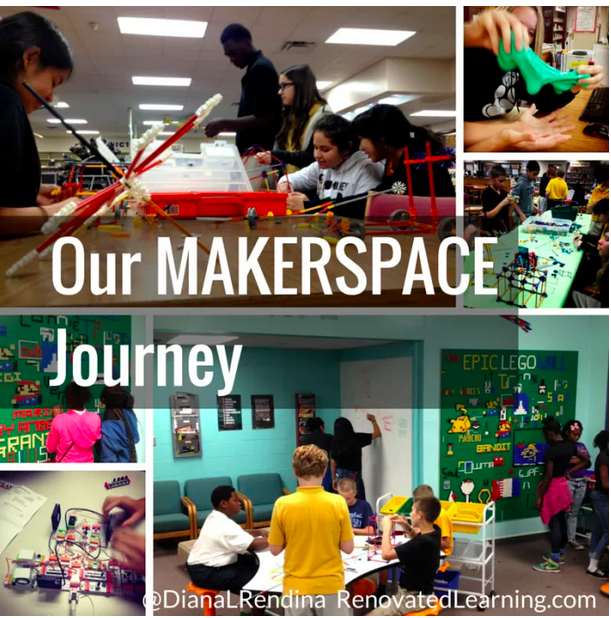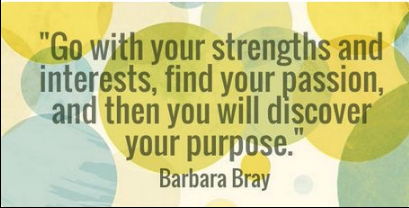All of us were born passionate learners. We came into the world curious about everything around us. We had a strong desire to want to talk, crawl, and walk. Watch a toddler take their first step, and you see passion-based learning. Listen to a musician practice a difficult piece until they are ready to perform. Watch a skateboarder try a new trick over and over — that takes persistence and passion to not give up.
You don’t always see that same type of passion in “school.” In many cases, school has been associated with pacing guides, required curriculum, grade-level standards, bell schedules, grades, and teaching to the test. In these situations, the teacher or the administration are the ones in control. The teacher tends to become the one held accountable for the learning. Yet to really LEARN something, the learner needs to own and drive their learning.
The focus on teaching and doing work that wasn’t relevant to me changed my thinking about who I was as a learner. I learned to play the game of school and “do” school so I could get “through” school.
Why do we have to change school to focus on passion-based learning?
School changes what kids believe what they are supposed to learn. If you ask kids around 3rd or 4th grade what they are learning in school, you might hear answers around how to behave, be a good listener, or how to do well on a test. We learned how to be compliant and follow the rules. Is this really what we want as the focus of school?
Now it’s time to bring back creativity, joy, and focus on the power of passion for learning.
A few suggestions from some awesome educators to encourage passion-based learning in your school:
1. First few days of school.
Get to know your learners right away before you start teaching. Every teacher and learner deserves a new opportunity to achieve. Consider waiting at least two weeks before jumping into academics. If you already started teaching academics before getting to know everyone, pull back. Check out Rich Czyz’s ideas for the first few days of school
2. Get to know your learners and their interests.
Invite your learners to share what they are interested in and their talents and aspirations. Have you ever thought of spending time one-on-one with each learner maybe schedule a lunch date? Ask them to start a journal or portfolio so they can share stories of their interests. Check out Michael Wesch’s Journey to the Joy of Learning so you too can see each learner differently.
3. Share interests.
Ask learners to do a pair/share where two share with each other what they are interested in. Invite them to ask each other:
- What are three things you are really interested in?
- Why did you choose each of those?
- Which one excites you the most? Why?

Then have them choose one with the help of the partner to share their first choice with all learners in the class. Encourage the class to ask questions and provide feedback with these two prompts
- I like…
- I wonder…
4. Explore interests.
Encourage them to explore their interest and how it might have a connection to the real world. Since you are probably still a part of the current traditional system, invite your learners to connect to required standards. Have them create a mind map of their interest and ways they can connect to what they know, what they have to learn, what they would like to learn, how they could demonstrate that they learned, and what questions they might have.
5. Identify a real-world problem.
Sometimes learners cannot connect their interest with a real-world problem. You could start with a problem where they might be able to make a real difference if they could solve that problem together. Walk around your school and go outside to observe what is around you. You and your learners may find a problem or issue you never thought about before. This is called “generative curriculum” which means coming up with questions and direction for learning as you learn.
6. Plan learning.
Let them plan together or individually using the following 3 questions from George Couros that drive Passion-Based Learning from his blog, The Principal of Change
-
- What will I learn?
- What will I solve?
- What will I create?
7. Make learning meaningful.
Dr. Jackie Gerstein, Ed.D [https://usergeneratededucation.wordpress.com/ ] shared experiences where she noticed that there was a problem with how she was being asked to learn. She was cramming and memorizing information, being tested for mastery prior to having enough practice time and learning facts with no context or relevance to what she needed to learn. In her post, she hit the nail on the head when you wrote, “The unintended consequences of these artificial and unnatural ways of learning include believing that learning should be difficult, painful, disciplined, and not fun. She also discussed the importance of context as relevant meaningful tasks.

“Learning can and should be natural, fun, and engaging.” @jackiegerstein.
I agree with Jackie that learning has to be meaningful and have a purpose.
[Source www.personalizelearning.com/2015/04/learning-can-and-should-be-natural-and.html]
8. Build a new culture of learning.
Give good reasons for learning. Watch this video from Dr. Tae about the culture of learning with secondary science teachers and university professors. What is the secret to learning? Real learning is mostly self-motivated paired with the right mentor.
Read Terry Heick’s article Promoting a Culture of Learning that walks you through using a gradual release of responsibility model:
- Show Them
- Help Them
- Let Them

9. Create a Makerspace.
Diana Rendina, Media Specialist/School Librarian at Stewart Middle Magnet School in Tampa, FL transformed her library to serve as an informal STEM learning space for her learners. Check out Renovated Learning to follow her Makerspace journey.

10. Develop Passionate Learners.
I highly recommend that you read Pernille Ripp’s book “Passionate Learners.” Pernille, a 7th grade Language Arts teacher at Oregon Middle School, Oregon, Wisconsin, being met. She then listened to their answers and tried to develop pathways writes her story about how she had almost quit teaching because she didn’t like the teacher she had become. She started by asking her learners which need they have that are not that may include their requested modifications.
Example Passion Projects
Julie Rogers Bascom, the Service-Learning Coordinator for Edina Public Schools in Minnesota, shared with me how the following year-long Passion Projects engaged learners in authentic real-world activities. [Edina Service Learning http://www.edinaschools.org/domain/78]
All 680 tenth grade learners in Edina High School’s Pre AP Language Arts Class engaged in a year-long Passion Project, digging deep into their interests as a way to meet learning standards. Each learner chose a topic of importance, researched and investigated the theme they chose, and wrote a ten-page research paper. As part of this course, each learner took action for an identified problem in their area of interest. One learner who is interested in computer science held an e-waste collection, filling two semi-trucks with electronic waste, diverting the waste from the landfill. One learner, concerned about clean water for a village where her grandparents live, designed a water filter that would help filter out excess fluoride from wells in rural India. Another learner, having been a foster child, lobbied for awareness and advocated for resources for foster families. Following the service-learning cycle:
IPARD – Investigation > Planning > Action > Reflection > Demonstration, learners used their knowledge and experiences from their research to solve community problems by engaging in authentic service-learning.
When you look at the bigger picture, it all comes down to one thing: the passion to learn and changing the focus to learning not on teaching. This has been my mission for over 25 years. Now I’m finding more and more examples of passion-based learning. Julie’s example of service-learning is more than an assignment. The learners found a problem they were passionate about and used critical thinking skills to solve it their way.
When I think of all the educators I know who stretch their thinking and go the extra mile like Diana, Julie, Rich, Jackie, Pernille, and George, and others, I know that no one can transform education alone. We all need to share and learn together. I found my purpose. It is to learn all I can about learner-centered environments, connect to others who believe all learners can learn their way, and share their stories of transformation of “school” to cultures of learning. I wrote this quote over ten years ago…
“Go with your strengths and interests, find your passion and,
then discover your purpose.”

I am thinking of changing that last part to “and your purpose will discover you.”
Has your purpose found you?
[This post was created for an article in the Fall OnCUE 2015 issue]

I updated the quote in 2017 to: “Go with your strengths and develop your passions to discover your purpose.”
*****
Interested in checking out more of the Rethinking Learning podcasts and reflections, click on the podcast tab at the top, the logo below, or go to https://barbarabray.net/podcasts/
For more information about Barbara’s book, Define Your WHY, go to this page or click on the image of the book for resources, questions, and links.






[…] it all comes down to one thing: passion to learn and changing the focus to learning not on teaching. How to do that? Here are 9 ways to create passion-based […]
Your article is just what I was looking . So inspiring. I also believe learning is something to be enjoyed, a moment to feel alive, and right now, many students are not aware of the passion(s) that, if correctly guided, could give them so much joy in theur lives. Thank you so much!!
[…] Are our students excited about their learning? Do we know their interests? Are we providing enough opportunities for choice in learning? Learn more about how to encourage passion-based learning at: 9 Ways to Encourage Passion-based Learning […]
[…] article, along with an article by Barbara Bray, has shown me how important it is for me, and other teachers, to encourage […]
This is awesome and so real.
[…] example, one school in Minnesota taught using passion-based learning for a 10th grade project. For the year-long project, students […]
[…] example, one school in Minnesota taught using passion-based learning for a 10th-grade project. For the year-long project, students […]
[…] example, one school in Minnesota taught using passion-based learning for a 10th-grade project. For the year-long project, students […]
[…] example, one school in Minnesota taught using passion-based learning for a 10th-grade project. For the year-long project, students […]
[…] instance, one faculty in Minnesota taught utilizing passion-based studying for a Tenth-grade venture. For the year-long venture, […]
[…] example, one school in Minnesota taught using passion-based learning for a 10th-grade project. For the year-long project, students […]